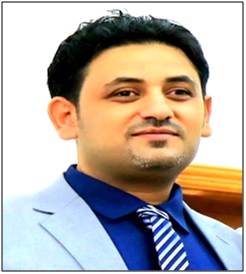THE EFFECTIVENESS OF MODIFIED OCCLUSAL SPLINT IN TREATMENT OF OROMANDIBULAR DYSTONIA FOR A SAMPLE OF YEMENI PATIENTS
Keywords:
Lateral deviation dystonia, mastication, occlusal splints, oromandibular dystonia (OMD), painAbstract
Background and aim: Dystonia is a neurological movement disorder characterized by sustained or periodic muscle contractions, resulting in abnormal, often repetitive, body movements or postures, or both. The movements are typically stereotyped and twisting, and may resemble a tremor. This study was conducted to investigate the effectiveness of a modified occlusal splint (the AL Hadi Modified Occlusal Splint) in the treatment of oromandibular dystonia (OMD).
Methodology: Modified Al-Hadi occlusal splints were fitted to 25 patients (21 males and 4 females) with oromandibular dystonia (OMD) and uncontrolled lateral mandibular deviation. These patients underwent monthly follow-ups for six months. The effectiveness of the modified occlusal splint was assessed by measuring changes in speech, pain, discomfort, involuntary lateral jaw movement, and mastication ability. Scores for each symptom ranged from 0 to 4, with a higher score indicating severe impairment.
Result: The results showed significant improvement in chewing ability starting from the second visit, as well as significant improvement in speech and discomfort (involuntary lateral jaw movement). However, no significant improvement was observed in pain levels. For example, at the six-month follow-up, 8% of patients reported normal chewing ability, 68% could eat anything without significant time-consuming, and 24% could only eat soft foods. Furthermore, no patient found it difficult or time-consuming to eat only soft foods or liquids. Furthermore, 16% of patients reported normal comfort, and no patient reported severe discomfort.
Conclusion: The modified occlusal splint has promise improvement in speech, mastication ability and uncontrolled lateral jaw movement.

Peer Review History:
Received 6 June 2025; Reviewed 12 July 2025; Accepted 22 August; Available online 15 September 2025
Academic Editor: Dr. Ahmad Najib , Universitas Muslim Indonesia, Indonesia, ahmad.najib@umi.ac.id
, Universitas Muslim Indonesia, Indonesia, ahmad.najib@umi.ac.id
Reviewers:
 Ahmed Tagelsir Mohamed Ali, National University, Sudan, ahmedtagelsir7@hotmail.com
Ahmed Tagelsir Mohamed Ali, National University, Sudan, ahmedtagelsir7@hotmail.com
 Antonio José de Jesus Evangelista, Federal University of Ceará, UFC, Brazil, tony_biomed@hotmail.com
Antonio José de Jesus Evangelista, Federal University of Ceará, UFC, Brazil, tony_biomed@hotmail.com
Downloads

Published
How to Cite
Issue
Section
Copyright (c) 2025 Universal Journal of Pharmaceutical Research

This work is licensed under a Creative Commons Attribution-NonCommercial 4.0 International License.









 .
.